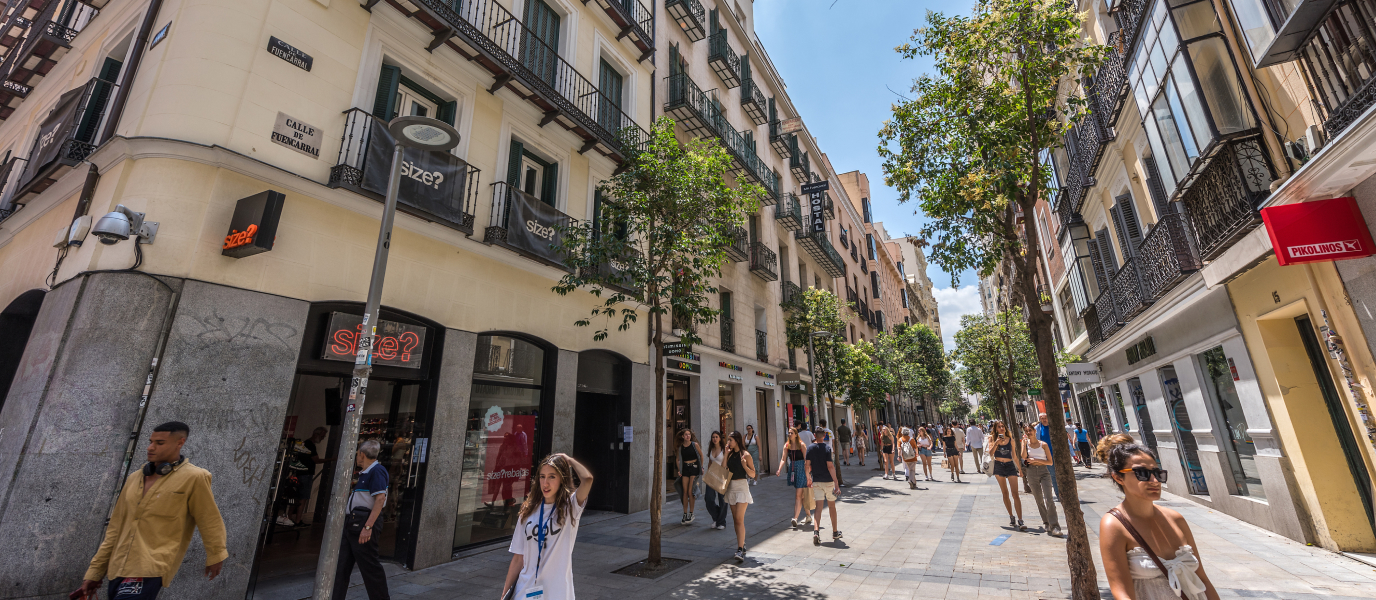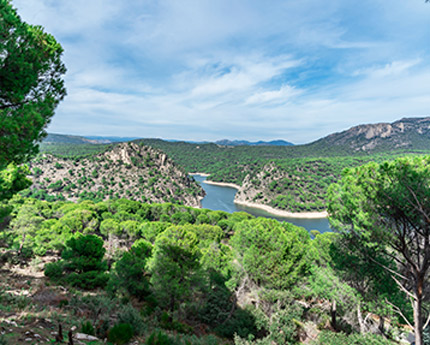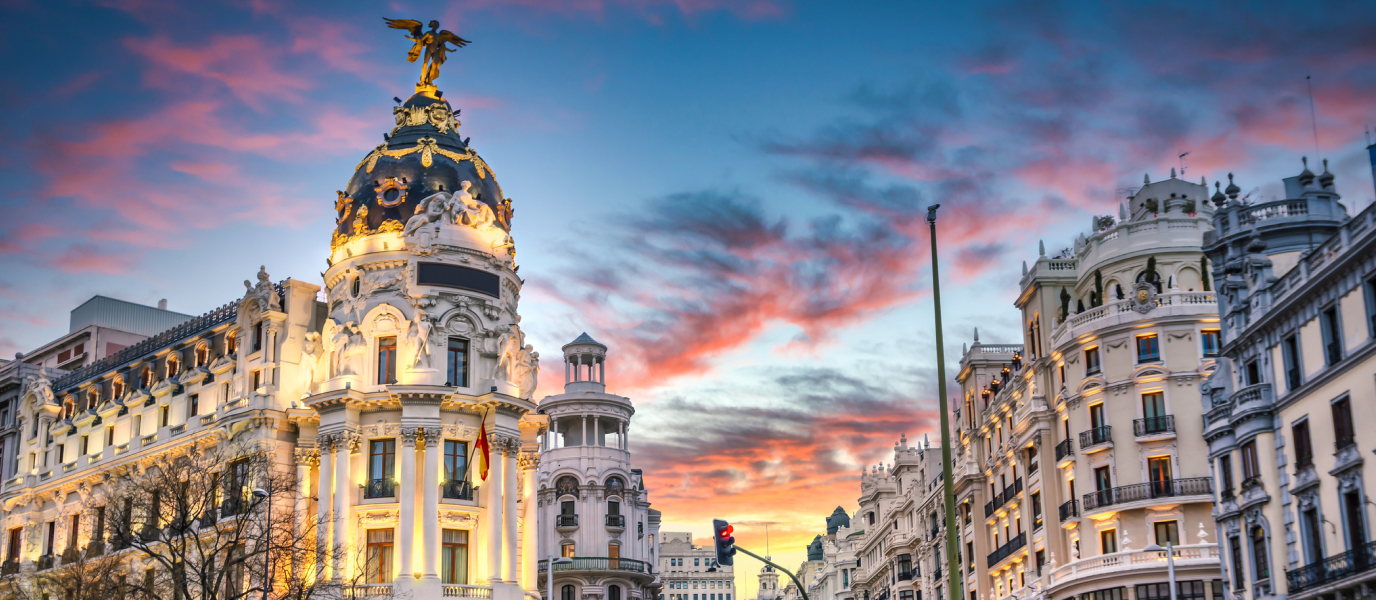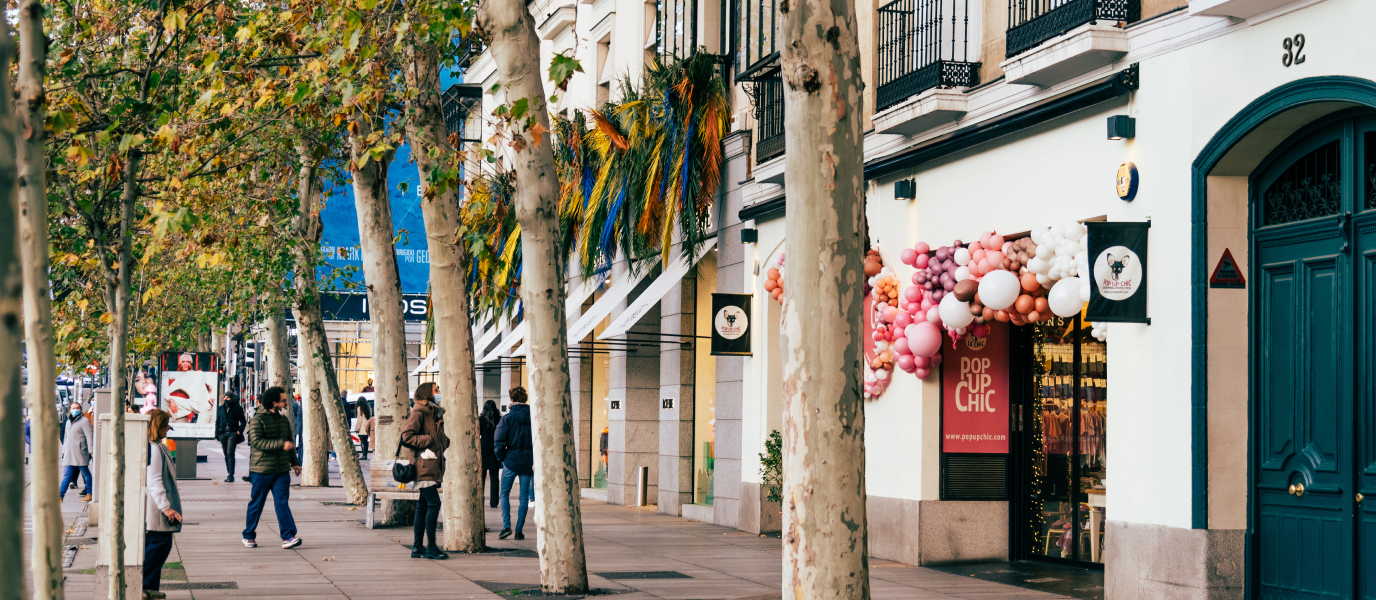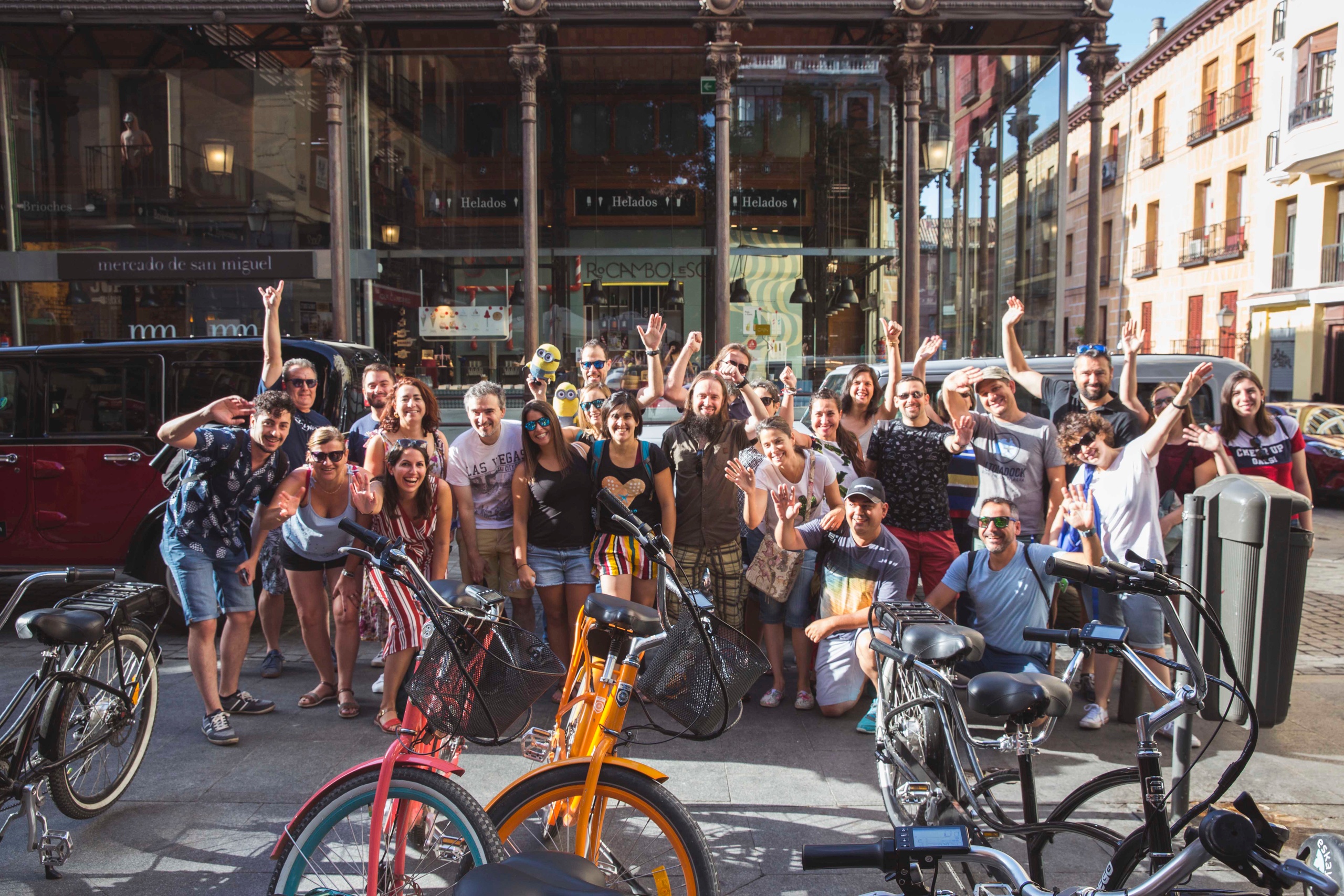What was once the road leading to the old village of Fuencarral is now a central street. The first section of it is pedestrianised, and it’s considered to be a fashion hub and the centre of the most urban and alternative trends. Calle Fuencarral travels north from Gran Vía and ends at the Glorieta de Quevedo, connecting the Centro and Chamberí neighbourhoods. Taking a walk here is a chance to soak up the busy, electric atmosphere. This hipster runway is perfect for anyone chasing the latest fashions who wants to find out what the most on-trend city dwellers are wearing. We’re going to take a stroll along the street from south to north. Are you coming?
Fuencarral’s pedestrianised section: urban culture at its best
As we turn off Gran Vía, right on the corner you’ll find the Espacio Fundación Telefónica—a cultural centre that plays host to exhibitions, workshops, conferences and other events which focus on new forms of art and culture that are emerging in the digital age—which lets you grasp the true spirit of the street. This initial pedestrianised section is fashion-dominated: here, you can find a wide variety of clothes and accessories sold by both well-known national and international brands, like Sfera, Adidas, Desigual or Custo Barcelona, and independent designers, like El Ganso, Oveja Negra or Kaotiko Fuencarral. But whichever shop you choose, the focus is all on urban, hip and sometimes vintage fashion. Both on this street and the surrounding ones you’ll also find lots of stores that cater to an alternative crowd, like tattoo parlours and bookshops selling comics or art.
The surrounding terraces invite visitors to pull up a chair and enjoy a beer whilst doing a spot of people watching. If you fancy it, you can turn right onto Calle Augusto Figueroa and lose yourself in Chueca, Madrid’s LGBT neighbourhood, where it’s well worth visiting the San Antón Market. This first section comes to an end at the Fuencarral Market, which closed its doors in 2015 and, two years later, was turned into a Decathlon. This is a perfect example of how the area has been gentrified over the last two decades.
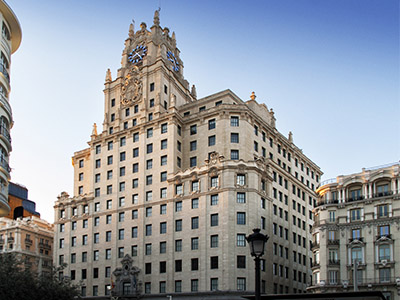
Glorieta de Bilbao via Tribunal, the heart and soul of Malasaña’s nightlife
On this second section of the street, you’ll start to see cars again, but there are also lots of other attractions to liven up your stroll. You’ll soon come across the San Ildefonso Market, which was Madrid’s first covered food market, operating between 1835 and 1970. In 2014, it too fell victim to gentrification, and reopened as a gastro or gourmet market, influenced by the street food markets of London and New York. In recent years, the area has become one of the capital’s gastronomic highlights. You’ll find restaurants that offer creative cuisine—such as Lateral, Ôven and Mérimeé Gastrobar—, marrying tradition with innovation.
A little further on you’ll see the Baroque building which houses Madrid’s History Museum. This is the site of the old Royal Hospice of San Fernando. It takes you on an interesting journey through the city’s history, explaining how this small town in the heart of Spain became the capital of the Kingdom overnight in 1561, thanks to Philip II. One of the main attractions is a model of what Madrid looked like in 1830, created by León Gil de Palacio. Re-emerging, you’ll arrive at the Tribunal metro stop, a popular meeting spot, and the place where countless nights spent in the bars in the neighbouring streets begin. This is the heart of Malasaña’s vibrant nightlife.
A little further on, the street reaches the Glorieta de Bilbao, the link between the Centre and Chamberí. As well as being home to a few hamburger joints, the historic Café Comercial can be found on this square. This café first opened its doors in 1887 and, after closing for two years, reopened in 2017.
Moving on to Glorieta de Quevedo: a beautiful boulevard where a few old cinemas are still hanging on
On this final section of Calle Fuencarral, that takes you to the Glorieta de Quevedo, you can tell you’re in Chamberí. This is an attractive boulevard typical of a suburb, lined with beautiful buildings that show Madrid at its most bourgeois and residential. You can take a break to investigate the Casa del Libro or enjoy an artisanal ice-cream at the popular Kalua. Of the many cinemas that flooded this stretch of the street in the 80s, two survive: the famous cinemas of Paz and Cinesa Proyecciones. The perfect way to end your stroll along Fuencarral.
A few historical anecdotes about Calle Fuencarral
Fuencarral is part of Madrid’s identity. With such a long history, there’s no shortage of anecdotes about the houses that line this street. We wanted to share just a few of them with you. The young Simón Bolívar, the great liberator of the South American people, lived at number 2 until 1801, along with his first and only wife. Number 4 was home to the influential nineteenth-century politician Antonio Cánovas del Castillo, whilst number 8 housed the Neo-classic playwright Leandro Fernández de Moratín. A long time later, also in number 4, Alfonso, Madrid’s famous photographer, opened his studio. Pepita Tudó died in number 22 in 1869. She was the model for two of Goya’s paintings, La Maja Desnuda (The Nude Maja) and La Maja Vestida (The Clothed Maja) and is well-known as the lover of the politician Manuel Godoy. Number 81 was the palace of the Count of Aranda, a minister of Charles III. Last but not least, number 95 was the scene of one of Madrid’s most famous murders, known as the crime of Calle Fuencarral. In 1888, a maid killed a bourgeouis, rich widow here, causing an uproar in both society and the press.




































































